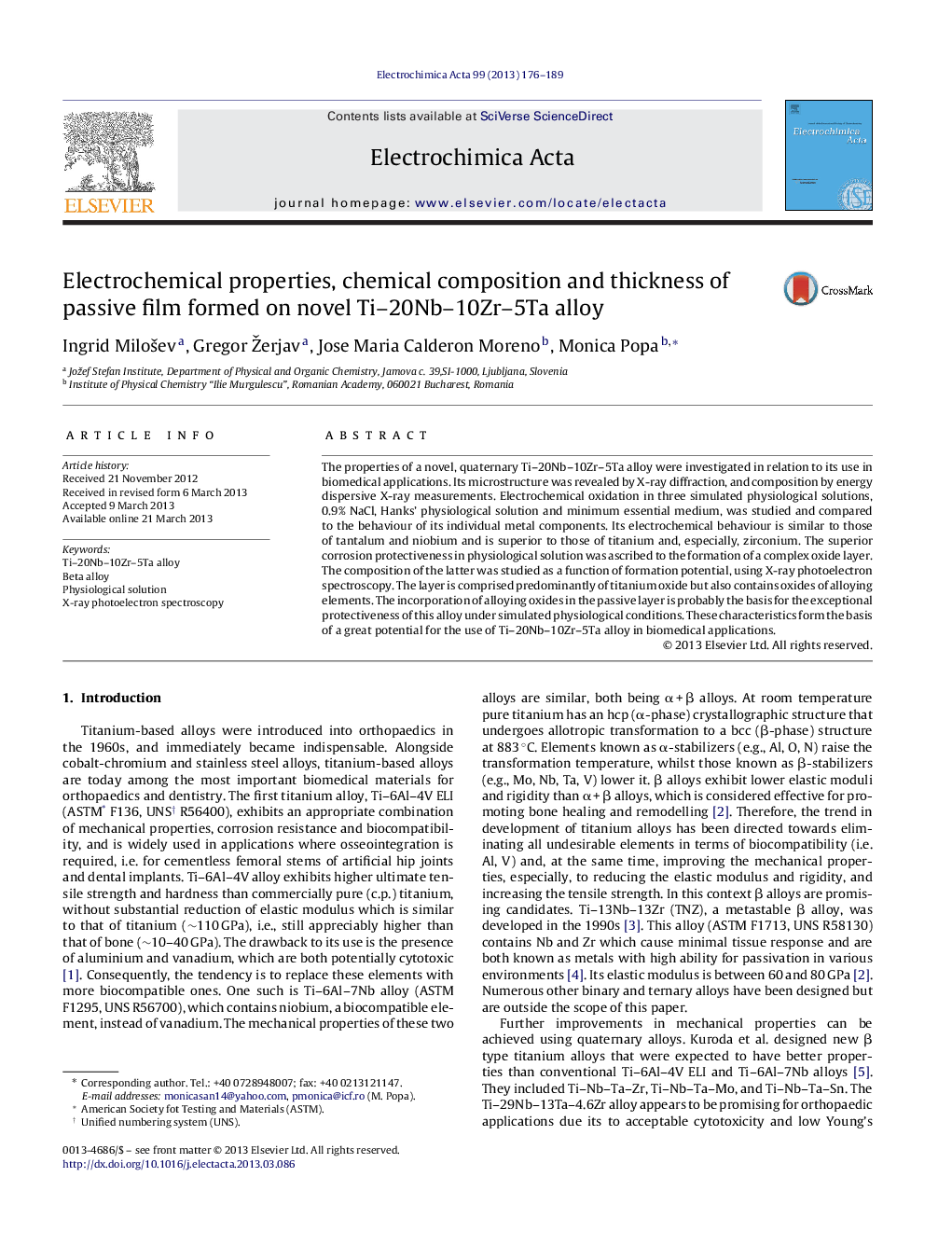| Article ID | Journal | Published Year | Pages | File Type |
|---|---|---|---|---|
| 187140 | Electrochimica Acta | 2013 | 14 Pages |
•The novel Ti–20Nb–10Zr–5Ta alloy shows exceptional electrochemical characteristics.•The composition of the complex oxide passive layer depends on the potential.•The oxidation of tantalum is inhibited under the experimental conditions used.•Alloying elements are enriched in the oxide layer relative to the bulk alloy.•The combination of properties makes this alloy suitable for biomedical applications.
The properties of a novel, quaternary Ti–20Nb–10Zr–5Ta alloy were investigated in relation to its use in biomedical applications. Its microstructure was revealed by X-ray diffraction, and composition by energy dispersive X-ray measurements. Electrochemical oxidation in three simulated physiological solutions, 0.9% NaCl, Hanks’ physiological solution and minimum essential medium, was studied and compared to the behaviour of its individual metal components. Its electrochemical behaviour is similar to those of tantalum and niobium and is superior to those of titanium and, especially, zirconium. The superior corrosion protectiveness in physiological solution was ascribed to the formation of a complex oxide layer. The composition of the latter was studied as a function of formation potential, using X-ray photoelectron spectroscopy. The layer is comprised predominantly of titanium oxide but also contains oxides of alloying elements. The incorporation of alloying oxides in the passive layer is probably the basis for the exceptional protectiveness of this alloy under simulated physiological conditions. These characteristics form the basis of a great potential for the use of Ti–20Nb–10Zr–5Ta alloy in biomedical applications.
